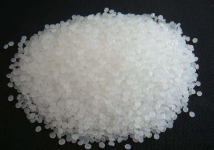read: 592 time:2025-06-23 13:06:32 from:化易天下
Understanding why phenol is less acidic than carboxylic acid involves delving into the molecular structure, resonance stabilization, and the nature of the substituents attached to the acidic proton. This comparison between phenols and carboxylic acids is essential for students and professionals in the chemical and pharmaceutical industries, as acidity significantly impacts the reactivity and behavior of these compounds.
At the heart of the acidity difference between phenols and carboxylic acids lies their molecular structure. Phenol has a hydroxyl group (-OH) attached directly to an aromatic ring, whereas carboxylic acids have a carboxyl group (-COOH), which consists of both a hydroxyl and a carbonyl group (-C=O).
The hydroxyl group in phenol is bonded to a benzene ring, which is electron-rich due to the delocalized π-electrons in the ring. This benzene ring can donate electron density to the oxygen of the hydroxyl group, thereby making the O-H bond stronger and less likely to donate a proton (H+). In contrast, the carboxyl group in carboxylic acids has a more complex structure with two oxygen atoms. These oxygens are highly electronegative, and their ability to pull electron density away from the hydrogen atom makes the proton in carboxylic acids much more likely to dissociate, thus increasing acidity.
One of the primary reasons why phenol is less acidic than carboxylic acid is due to differences in resonance stabilization of their conjugate bases. When phenol loses a proton, the resulting phenoxide ion (C6H5O-) is stabilized by resonance, where the negative charge can be delocalized over the oxygen atom and the aromatic ring. However, this resonance is not as effective because the electron density is still somewhat concentrated on the oxygen, which keeps the negative charge relatively localized.
On the other hand, when a carboxylic acid loses a proton, the resulting carboxylate ion (R-COO-) is highly stabilized by resonance. The negative charge is delocalized between the two oxygen atoms, making the conjugate base significantly more stable. This increased stability of the carboxylate ion leads to a stronger tendency of the carboxylic acid to lose a proton, hence its greater acidity compared to phenol.
Another factor explaining why phenol is less acidic than carboxylic acid is the inductive effect. In carboxylic acids, the carbonyl group (C=O) exerts a strong electron-withdrawing inductive effect due to the high electronegativity of the oxygen atom. This effect pulls electron density away from the hydroxyl group, further weakening the O-H bond and making it easier to release the hydrogen ion.
Phenol, lacking this strong electron-withdrawing group, does not benefit from such an inductive effect. The benzene ring can slightly withdraw electrons due to its conjugation, but this effect is much weaker compared to the carbonyl group in carboxylic acids. Therefore, phenol is less acidic because the O-H bond in phenol remains stronger and less prone to dissociation.
In summary, why phenol is less acidic than carboxylic acid can be attributed to several key factors: the nature of the functional groups involved, resonance stabilization of the conjugate bases, and inductive effects. Carboxylic acids have a stronger electron-withdrawing group and a more effectively stabilized conjugate base, both of which contribute to their higher acidity. Understanding these differences is crucial for manipulating the chemical properties of these compounds in various industrial applications.

Jincheng Petrochemical's 300000 ton polypropylene plant successfully trial production, 2024 polypropylene market analysis

The ABS market remains sluggish, what is the future direction?

Market differentiation of bisphenol A intensifies: prices rise in East China, while prices generally decline in other regions

The production method and process flow of silicone acrylic lotion, and what are the common raw materials